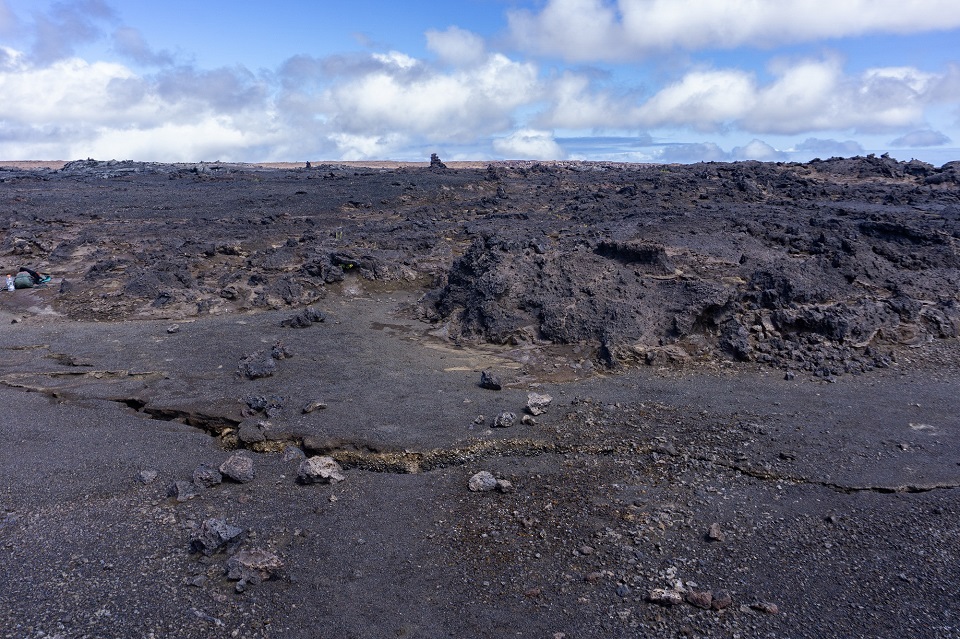News Release
You are viewing ARCHIVED content published online before January 20, 2025.
Please note that this content is NOT UPDATED, and links may not work. For current information,
visit https://www.nps.gov/aboutus/news/index.htm.

NPS Photo/Y.Baur
|
Subscribe
|
Contact: Jessica Ferracane, 808-985-6018
HAWAII NATIONAL PARK, Hawaiʻi – Kaʻū Desert Trail and Maunaiki Trail have reopened in Hawaiʻi Volcanoes National Park. The two trails were closed when the short-lived June 3 fissure eruption began near Kīlauea volcano’s remote upper Southwest Rift Zone.Hikers are required to stay on trail due to hazards that include volcanic gas emissions from the new fissures and flow areas, ground fractures, and subsidence features that may continue to widen and have unstable overhanging edges. In addition, hikers on Maunaiki Trail should watch out for new earth cracks that have bisected the trail in several places.
The new lava flows and fissures are not accessible and are in an area south of Kīlauea caldera that has been closed since 2008 due to volcanic unrest and damage from the 2018 eruption and summit collapse.
Kīlauea is not erupting but seismicity beneath the summit, upper East Rift Zone, and upper Southwest Rift Zone have returned to slightly elevated levels. USGS Hawaiian Volcano Observatory (USGS HVO) states that “changes in the character and location of unrest can occur quickly, as can the potential for an eruption, but there are no signs of imminent eruption at this time.”
Visitors should plan ahead and check the park website for updates.
The fissure eruption started on Monday, June 3 around 12:30 a.m. in a remote area in Hawaiʻi Volcanoes National Park, about about 2.5 miles (4 km) southwest of Kīlauea caldera near the volcano’s upper Southwest Rift Zone. The eruption lasted 8.5 hours, according to USGS HVO.
-NPS-
About the National Park Service. More than 20,000 National Park Service employees care for America's 429 national parks and work with communities across the nation to help preserve local history and create close-to-home recreational opportunities. Learn more at www.nps.gov and on Facebook, Instagram, Twitter, and YouTube.
Last updated: June 18, 2024
